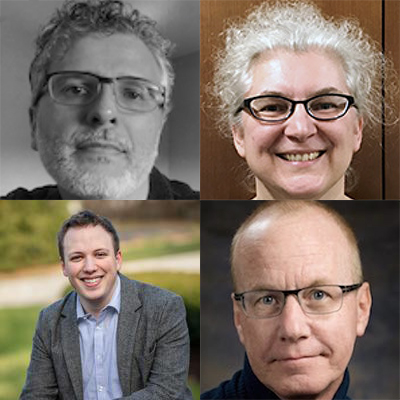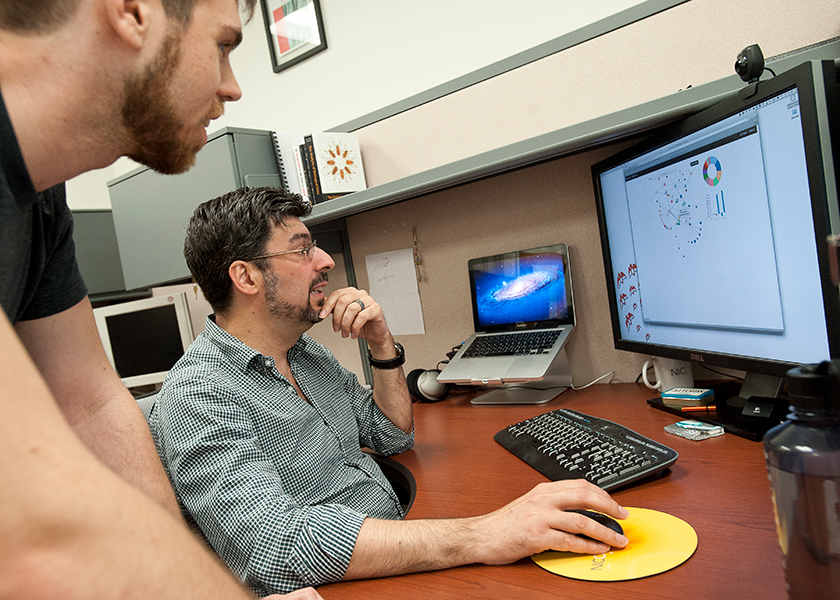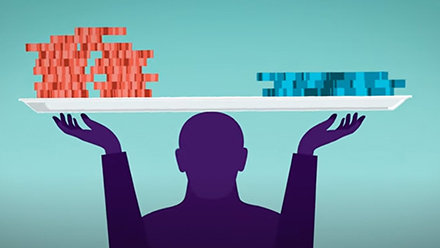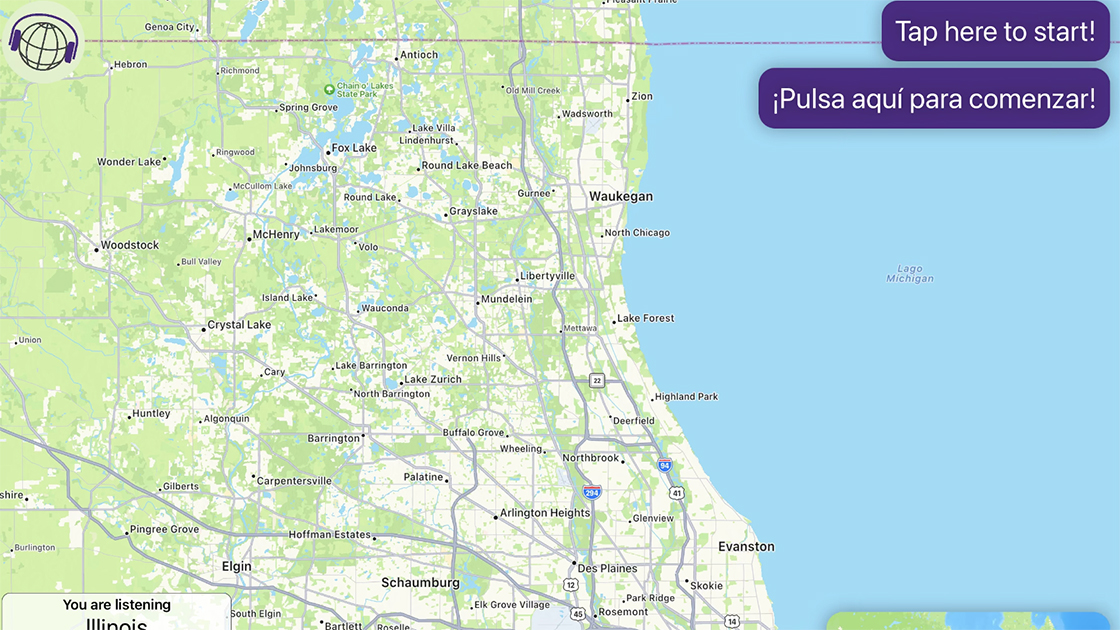When Amaral was co-directing the Northwestern Institute on Complex Systems (NICO), he brought Tejedor in as a developer to help other groups take advantage of his skills in app development. Their first project, Silhouette, was released in 2019 and is available on the macOS operating system. Downloaded more than 15,000 times, Silhouette turns raw microscopy data into cell-specific measurements that are suitable for quantitative analysis. To generate each measurement, Silhouette automatically identifies all cells within an image then quantifies the properties of each identified cell. In addition to morphological properties such as cell size and position, the intensities of fluorescent reporters are quantified by averaging all the pixels within each identified cell.
“Nicolás Peláez, a graduate student in Amaral and Richard Carthew’s lab was the real champion of this project. Close partnerships were really critical to our success,” Tejedor said.
Amaral has also enlisted the help of students to build other apps. Reese Richardson, a PhD student in interdisciplinary biological sciences, championed Find My Understudied Genes.

Clockwise, from top left: Helio Tejedor, Suzan van der Lee, Richard Carthew, Reese Richardson
That app, available on macOS, iOS and Windows, is a data-driven tool to help biomedical researchers identify understudied genes and characterize their tractability for future research. Users submit a list of human genes and can filter these genes down based on a large list of factors, including the number of articles about a gene, the probability of differential expression, the homology in model organisms, the availability of reagents, and the number of articles about relationship between gene and disease, among others. Find My Understudied Genes was recently profiled in a Nature feature.
Richardson oversaw the development of the app’s database. To do this, he corralled data from more than three dozen different sources and matched it all to one another. From there, the team tested various features to determine what would be most useful to biologists.
“I learned how difficult it is to develop and maintain high-quality applications,” Richardson said. “We strive for high standards of usability and data quality, so I definitely picked up a few lessons along the way about rigor in data analysis and preparation of tools for other scientists.”
The apps also allow scientists to upload and store their data, inviting fellow researchers to check their methods and verify findings.
“That makes all the work across labs around the world more reproducible. We should be getting the same results and understand when we don't,” Amaral said. “It's also very important in enabling better science to be done across the world.”









